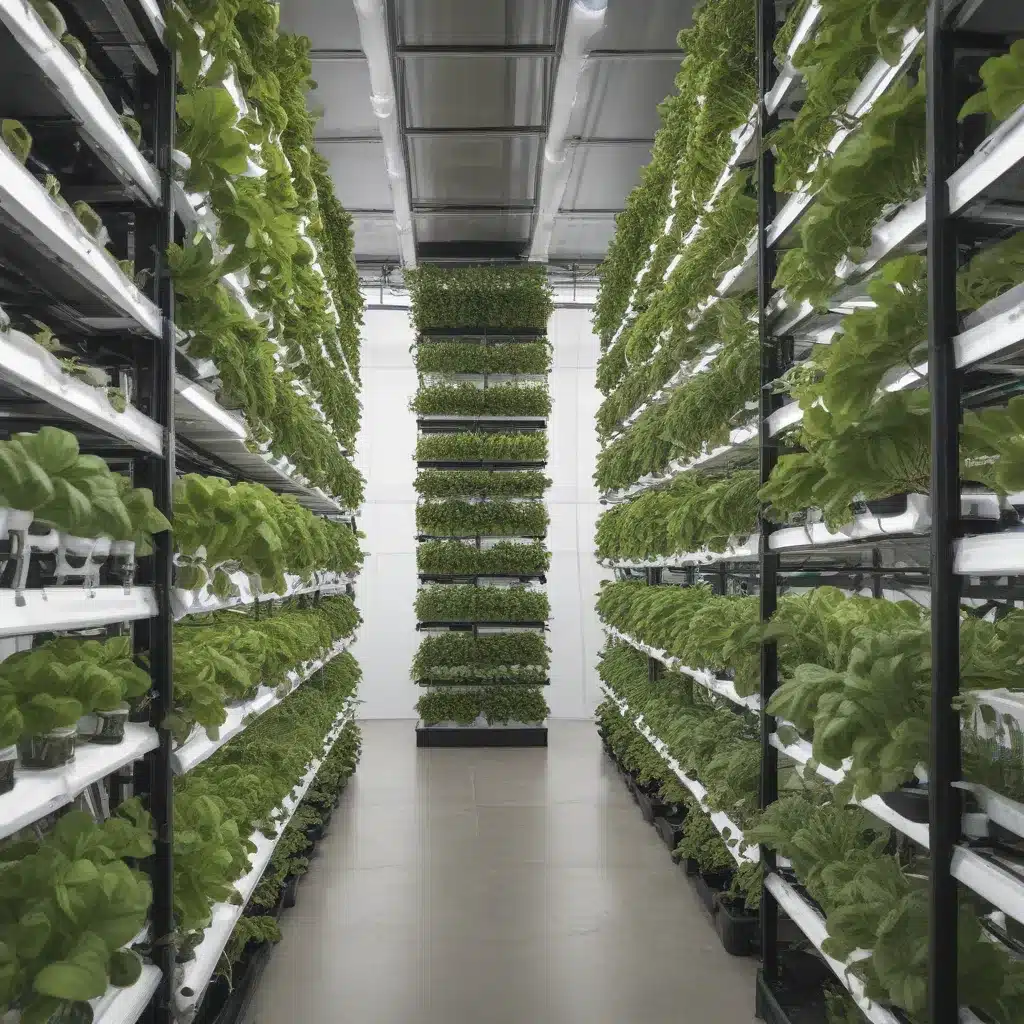
Vertical Farming: The Future of Urban Agriculture
As a computer repair technician, I’ve always been fascinated by the intersection of technology and agriculture. It’s amazing to see how the principles of efficient computing can be applied to revolutionize the way we grow our food. One area that has particularly captured my attention is the rise of vertical farming – an innovative approach that is poised to transform the landscape of urban agriculture.
Recent studies have shown that vertical farming holds immense potential to address the challenges of limited land, water scarcity, and environmental sustainability that traditional farming methods often struggle with. By stacking crop production vertically, we can maximize the use of available space, reduce the impact on natural resources, and bring fresh, nutrient-dense produce right to the doorsteps of urban centers.
As I delve deeper into the world of vertical farming, I can’t help but draw parallels to the work I do in computer repair. Just like optimizing the performance of a computer’s hardware and software, the key to successful vertical farming lies in the careful integration of cutting-edge technologies and efficient systems. From precisely controlled environments to automated monitoring and optimization, the principles of automation and data-driven decision-making are at the heart of this agricultural revolution.
The Benefits of Vertical Farming
One of the primary advantages of vertical farming is its ability to address the issue of limited land availability, particularly in densely populated urban areas. By stacking multiple growing layers in a vertical configuration, vertical farms can produce significantly more food per square foot of land than traditional horizontal farms. This is a game-changer for cities, where space is at a premium and the demand for fresh, locally-sourced produce is constantly on the rise.
But it’s not just about maximizing land usage; vertical farming also offers remarkable benefits in terms of resource efficiency. These high-tech farming systems are designed to meticulously control the growing environment, optimizing factors like temperature, humidity, lighting, and nutrient delivery. This precision allows for a dramatic reduction in water consumption and eliminates the need for pesticides, creating a more sustainable and environmentally-friendly food production model.
Another compelling aspect of vertical farming is its ability to bring fresh, nutrient-dense produce right to the heart of urban centers. By locating these farms in close proximity to the communities they serve, we can dramatically reduce the distance food travels from farm to table, minimizing the carbon footprint and ensuring the highest quality and freshness.
The Technological Backbone of Vertical Farming
As a computer repair technician, I can’t help but marvel at the technological sophistication that underpins modern vertical farming systems. These high-tech facilities are essentially “indoor farms” that rely on a carefully orchestrated integration of sensors, automation, and data analytics to create the optimal growing conditions for a wide variety of crops.
At the core of a vertical farm is a meticulously designed growing environment, with precisely controlled temperature, humidity, lighting, and nutrient delivery. Sensors constantly monitor these parameters, feeding real-time data into advanced algorithms that optimize the conditions for maximum plant growth and yield. It’s a seamless collaboration between human ingenuity and the power of technology, not unlike the work I do in repairing and optimizing computer systems.
But the innovation doesn’t stop there. Vertical farms also incorporate cutting-edge hydroponics and aeroponics systems, which eliminate the need for soil and use nutrient-rich water or mist to nourish the plants. This not only conserves water but also allows for a more precise and efficient nutrient delivery, further enhancing the productivity and sustainability of the farming process.
Overcoming the Challenges of Vertical Farming
Of course, as with any transformative technology, vertical farming is not without its challenges. One of the primary hurdles is the significant upfront investment required to construct and equip these high-tech facilities. The specialized infrastructure, advanced technologies, and energy-intensive growing environments can make vertical farming a capital-intensive endeavor, especially for smaller operations.
Another obstacle is the need for specialized expertise and continuous optimization to ensure the efficiency and productivity of these systems. Just like maintaining a high-performance computer, vertical farms require a dedicated team of horticulturists, engineers, and data analysts to monitor, tweak, and fine-tune the various components of the operation.
But as the industry continues to evolve and the benefits of vertical farming become more widely recognized, I’m confident that these challenges will be addressed through innovation and economies of scale. The potential for vertical farming to transform our food systems and create a more sustainable, resilient, and accessible urban agriculture landscape is simply too great to ignore.
The Future of Vertical Farming: A Promising Horizon
As I continue to explore the world of vertical farming, I can’t help but feel a sense of excitement and optimism about the future of this field. The convergence of technology, horticulture, and sustainability has the potential to reshape the way we think about food production, distribution, and consumption.
Imagine a future where vibrant, high-yield vertical farms are integrated seamlessly into the urban landscape, providing fresh, local produce to the surrounding communities. A future where the carbon footprint of our food supply is dramatically reduced, and the strain on natural resources is alleviated through the efficient use of space and resources. A future where the principles of data-driven optimization and automation, so familiar to me in the world of computer repair, are applied to revolutionize the way we grow and distribute our food.
This vision of a more sustainable, resilient, and equitable food system is not just a distant dream; it’s a future that is rapidly taking shape, thanks to the pioneers and innovators who are pushing the boundaries of vertical farming. As a computer repair technician, I’m honored to be a part of this technological transformation, and I can’t wait to see how the fusion of my expertise and the world of agriculture will continue to unfold.












